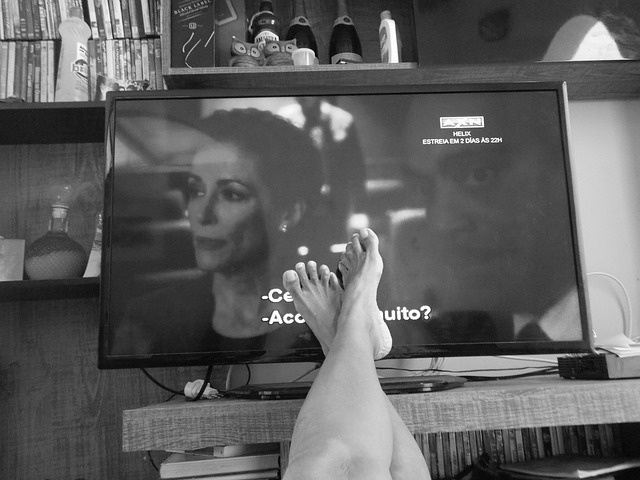Understanding the Importance of a Daily Routine
A daily routine serves as the backbone of our lives. By establishing a structured sequence of tasks throughout the day, we create a framework that holds us accountable and organizes our time effectively. Without structure, the day can easily slip away, leaving us feeling unproductive and overwhelmed. Think about your own experiences; how many times did you start a day with good intentions, only to get sidetracked by unexpected distractions? This is where the magic of a solid routine comes into play. It anchors you, guiding your focus and intention toward achieving your goals and maximizing productivity.
Creating a daily routine isn’t just about filling up your calendar with tasks. It’s about designing a harmonious flow that reflects your values, aspirations, and, importantly, your unique rhythm. Some people thrive in the morning, bursting with energy as the sun rises. Others find their creativity peaking late at night when the world quiets down. Recognizing your natural ebb and flow is essential in shaping a routine that enhances productivity. When your schedule aligns with your intrinsic motivation, each task feels less like a chore and more like a stepping stone toward your overarching goals.
Moreover, a well-thought-out daily routine alleviates decision fatigue. Imagine waking up and knowing exactly how your day will unfold. You eliminate the stress of planning and the mental strain that comes with constant decision-making. Instead, you can channel your energy into executing tasks instead of pondering what to do next. This boost in efficiency not only helps in achieving those small daily objectives but also drives you closer to your long-term goals. When you’re more organized and feel in control, you’re better equipped to handle any curveballs life throws your way.
Identifying Your Goals for Increased Productivity
The first step in shaping a routine that truly increases productivity is identifying your goals. The clearer your vision, the easier it is to streamline your daily actions toward achieving it. What do you aspire to accomplish? It could be a career ambition, personal development goals, or even long-desired hobbies you wish to pursue. Once you pinpoint your goals, you can break them down into actionable steps that seamlessly integrate into your daily routine.
Consider adopting the SMART criteria for your goal-setting: Specific, Measurable, Achievable, Relevant, and Time-bound. For instance, rather than saying, “I want to read more,” transform it into “I will read one book every month by dedicating 30 minutes each evening.” This approach not only provides clarity but also makes it much easier to weave your goal into your daily schedule. When your goals are manageable and concrete, you reduce feelings of overwhelm that often accompany ambiguous aspirations.
Furthermore, it’s crucial to prioritize these goals. Life isn’t just about checking items off your to-do list; it’s about ensuring that the tasks you commit to each day genuinely propel you forward. Create a hierarchy of your goals, distinguishing between what’s urgent and significant. This distinction allows you to allocate your time wisely, ensuring that you focus on tasks that lead to genuine progress and fulfillment. Emphasizing quality over quantity enables you to make lasting strides in goal achievement.
Finally, as your goals evolve, so should your daily routine. Periodically revisit what you aim to achieve, making adjustments as necessary. As new opportunities arise, or as your priorities shift, your routine should reflect those changes. This adaptability contributes to sustained productivity and ensures that your daily actions resonate with your current aspirations.
Designing Your Daily Routine
Now that you’ve set your goals, it’s time to design a daily routine that serves them. Begin by examining how your current routine looks. Keeping a log of your daily activities for a week can provide invaluable insights into how you’re spending your time. Once you visualize your habits, you can identify patterns that either support or hinder productivity. Take notes in areas where you feel most productive and examine moments when you feel drained or distracted. Recognizing these patterns can significantly weigh into designing a routine tailored to you.
Begin each day with a morning ritual. This could include meditation, stretching, or even enjoying a healthy breakfast. Mornings often set the tone for the rest of the day, so engaging in activities that elevate your mood and mental clarity can boost your productivity significantly. A well-structured morning routine serves to ground you, providing a sense of accomplishment right from the start. It’s essential to keep it simple. Start with one or two activities and incrementally add more as you grow comfortable with your routine.
Next, allocate specific blocks of time for focused work. This can involve chunking your tasks into 25-minute segments followed by a 5-minute break, often referred to as the Pomodoro Technique. During those focused intervals, minimize distractions. Turn off notifications, close unnecessary browser tabs, and create a dedicated workspace. Establishing a sacred space helps in honing your focus. It sends a message to your brain that it’s time to be productive. When you dedicate yourself to tangible periods of concentration, the quality of your work typically increases.
Don’t forget to include time for breaks in your routine. Taking short breaks can significantly enhance overall productivity by preventing burnout. Engaging in short physical activities or taking a short walk can refresh your mind and give your body a much-needed break. Over time, you’ll find that these breaks rejuvenate your creative energy, making your overall work period more effective.
Implementing Flexibility into Your Routine
While structure is vital for productivity, flexibility is equally indispensable. Life can be unpredictable, and some days, despite the best of intentions, things might not go according to plan. Recognizing the need for flexibility in your daily routine can create a more realistic and manageable lifestyle. When you commit to a rigid schedule, you risk becoming frustrated if interruptions disrupt it. Instead, embrace a mindset that welcomes modifications while still prioritizing your goals.
One effective way to introduce flexibility into your routine is by allocating ‘buffer’ time. This means setting aside a specific period each day where you do not plan any specific tasks. Instead, this time can absorb any unexpected interruptions. If a meeting runs late or you find yourself caught up in a project requiring more attention, this buffer serves as a breathing space, allowing you to reset without derailing the entire day.
Another technique to consider is the ‘two-day’ rule. This approach encourages you to avoid letting two consecutive days go by without pursuing your goals. For instance, if you planned to work out every day, and life gets in the way, don’t beat yourself up. Simply get back on track the following day. This rule fosters resilience and motivation. It helps prevent negative feelings associated with missed tasks and keeps morale high.
Incorporating relaxation into your routine is another way to maintain balance. Often, people push themselves relentlessly, equating busyness with productivity. However, periods of rest and reflection are crucial for long-term success. A relaxed mind nurtures creativity, allowing you to think more clearly and make better decisions. Be intentional about scheduling time for relaxation, periods of connection with family or friends, and personal hobbies that excite you.
Tracking Progress and Making Adjustments
Once you establish your daily routine, don’t simply set it and forget it. Continuous monitoring and evaluation are fundamental components in ensuring that your routine remains effective in increasing productivity. Reflect on your progress regularly—weekly, or even daily. Ask yourself whether your routine aligns with your goals and where you might need to adjust. Keeping a journal can facilitate this reflective process, allowing you to track achievements and fluctuations honestly.
In addition to self-reflection, accountability can drive further progress. Share your goals and routines with a friend or a colleague. By vocalizing your aspirations, you create a support system that both inspires and motivates you. Regular check-ins can help maintain focus and keep you on track. In many cases, having someone to share your journey with encourages a deeper commitment to your plans.
As you track your progress, embrace the mindset that setbacks are a part of growth. This allows you to frame challenges positively, viewing them as opportunities to learn rather than failures. Adjust your routine based on what works and what doesn’t. Flexibility is vital; what seemed effective last month might not suit you now. Your evolving understanding of your preferences can lead to an ever-improving routine tailored to your needs.
Lastly, celebrate your successes, no matter how small they may appear. Acknowledge your achievements and reflect on how far you’ve come. Celebrating wins reinforces positive behavior, generating momentum for future productivity. By rewarding yourself for sticking to your routine, you create an environment that fosters ongoing commitment and motivation. Remember, productivity is a journey, and acknowledging your growth is integral to that journey.
FAQs
1. How long does it take to establish a daily routine?
Establishing a daily routine can take anywhere from a few weeks to a few months, depending on the individual. It often requires consistency and patience. Studies suggest that forming a habit can take an average of 21 to 66 days, but this may vary widely. The key is to start small and gradually build on your routine as it becomes more ingrained in your daily life.
2. What type of activities should I include in my daily routine to increase productivity?
Your routine should include a balance of activities that promote physical health, mental well-being, and goal-oriented tasks. Incorporate elements like exercise, focused work sessions, breaks for relaxation, and time for personal interests or hobbies. Be sure to customize it to what energizes you and matches your long-term objectives.
3. How can I handle distractions while trying to stick to my routine?
To handle distractions, create a dedicated workspace where interruptions are minimized. Turn off notifications on your devices, use productivity apps, and, if possible, inform those around you of your focused work hours. Establish specific times for checking emails and social media so that they don’t disrupt your tasks.
4. What should I do if I miss a day in my routine?
If you miss a day in your routine, don’t stress. Acknowledge the slip and get back on track the following day. You can use the two-day rule: avoid letting two consecutive days pass without working toward your goals. Focus on maintaining consistency moving forward rather than dwelling on setbacks.
5. How can I ensure my daily routine remains effective over time?
To keep your routine effective, regularly reflect on your progress and make necessary adjustments. Monitor your goals and be willing to adapt your routine to your changing needs or circumstances. Include a mix of activities to keep it engaging, and incorporate periodic breaks to prevent burnout.



